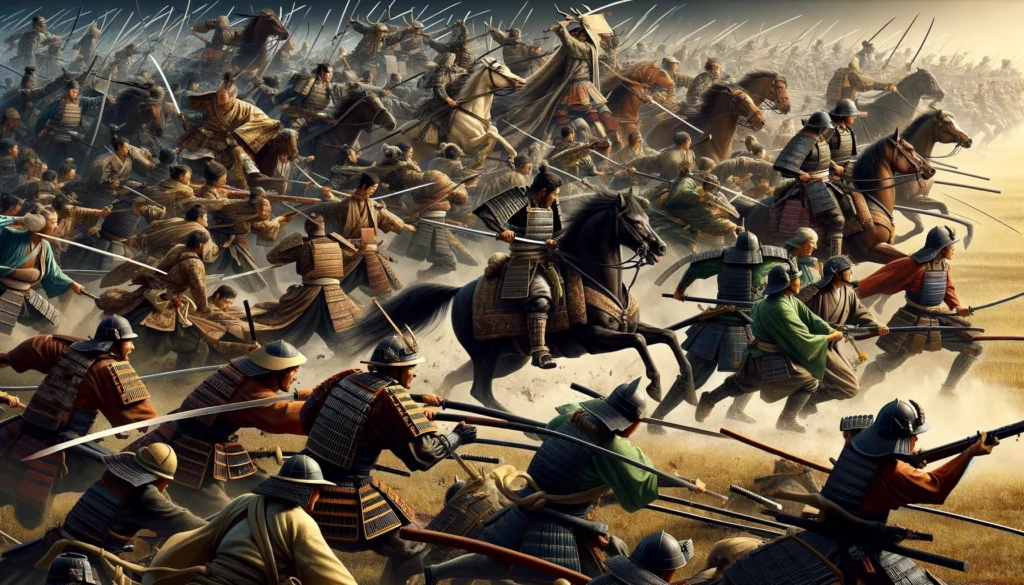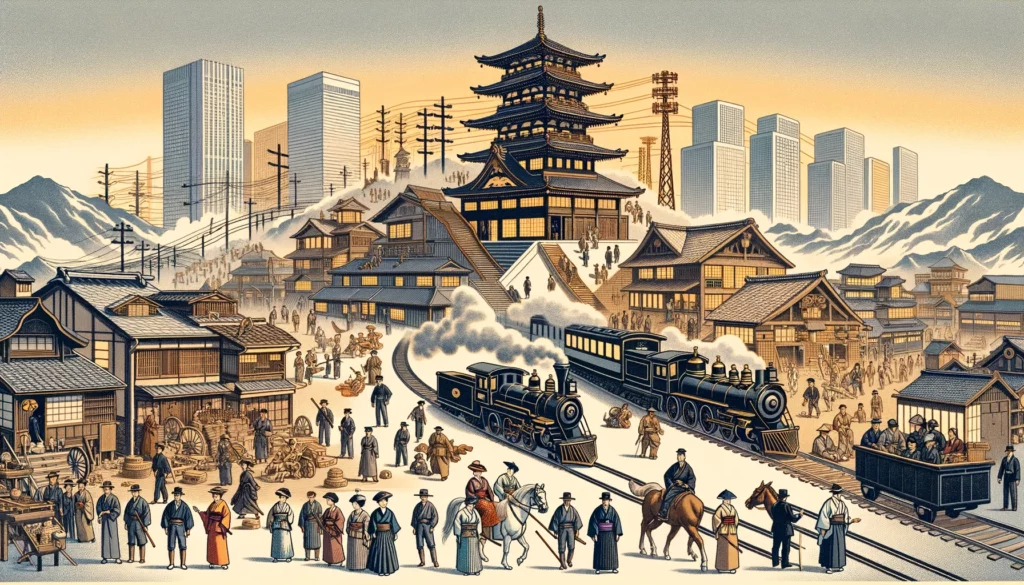In the annals of Japanese history, few events hold as much significance as the fall of the Shogunate. This wasn’t just a political upheaval; it was a transformation that rerouted the course of a nation. The Shogunate, for centuries, stood as the embodiment of Japanese tradition and power, with the Shogun reigning supreme over a society structured by strict samurai codes. This article ventures into the heart of this historical event, unraveling the factors that led to such a monumental shift in Japan’s destiny.
The Crux of the Shogunate’s Collapse

Historical Backdrop
To understand the fall, one must first grasp the essence of the Shogunate system. Originating in the 12th century, this military-led government saw various clans rise and fall, with the Tokugawa clan assuming power in 1603. This marked the beginning of the Edo period, a time of relative peace, cultural flourish, and isolation from the outside world. Under the Shoguns, Japan experienced over two centuries of stability, with a society firmly rooted in Confucian principles and a strict class hierarchy.
The Edo Period’s Social Fabric
The Edo period, despite its tranquility, sowed the seeds of the Shogunate’s eventual downfall. The society was divided into distinct classes: the samurai warriors at the top, followed by peasants, artisans, and merchants. While the samurai class enjoyed privileges, they were also under strict obligations to their lords, leading to a complex web of loyalties and duties. Over time, the samurai, once the heart of Japanese military prowess, found themselves becoming bureaucrats and administrators, their martial skills no longer in demand in a period of peace.

Economic Strains
The peace of the Edo period came with a price. The economic policies of the Shogunate, centered around rice production and fixed stipends for samurai, began to strain under the weight of a changing economy. As commerce and urbanization grew, the merchant class, despite being at the bottom of the social hierarchy, started to gain wealth, challenging the traditional order. Meanwhile, many samurai found themselves in financial distress, as their stipends remained unchanged amidst rising costs of living.
The Rise of Intellectual Movements
Parallel to these economic and social shifts, intellectual currents began to challenge the status quo. The Sakoku policy of national isolation kept Japan closed off from the world, but it couldn’t keep out ideas forever. By the 18th century, scholars began to question the policies of the Shogunate and the Confucian ideals that underpinned society. The rise of ‘National Learning’ (Kokugaku), which emphasized Shinto and Japanese classics, also fostered a sense of national identity and questioned the influence of Chinese culture.
The Shogunate’s Decline: A Confluence of Forces

Western Intrusion and the Shogunate’s Response
The arrival of Commodore Matthew Perry in 1853 was a jolt to the Shogunate’s system. Perry’s demand for Japan to open its ports to trade was a direct challenge to the nation’s policy of isolation. The Shogunate’s response to this foreign pressure was one of indecision and confusion. This uncertainty revealed the Shogunate’s weakness not only to the foreign powers but also to its own people. The subsequent signing of unequal treaties with Western nations exacerbated the loss of faith in the Shogunate, as these agreements exposed Japan to foreign influence and exploitation.
Internal Dissent and the Rise of Opposition
The Shogunate’s inability to effectively counter Western encroachment fueled dissatisfaction among various Japanese factions. Influential domains like Choshu and Satsuma, which had long harbored resentment towards the Tokugawa Shogunate, began to rally for a restoration of imperial power. These domains, leveraging their dissatisfaction with foreign treaties and the Shogunate’s handling of affairs, started to amass power and influence, setting the stage for conflict.
The Boshin War: The Final Struggle
The tension between the Shogunate and its opponents culminated in the Boshin War, a civil war that erupted in 1868. This conflict was not just a battle for control between the Shogunate and the imperial loyalists; it represented a clash between traditional Japan and a new vision of a modernized nation-state. The imperial forces, backed by domains like Satsuma and Choshu and equipped with modern Western weaponry, eventually triumphed over the Shogunate’s armies.

Conclusion: The Dawn of a New Japan
The fall of the Shogun in 1869 marked more than the end of a political regime; it signified the closing of an age and the birth of modern Japan. The Meiji Restoration that followed ushered in an era of rapid modernization and westernization. This transformative period saw Japan emerging from the confines of feudalism to become a world power. The fall of the Shogunate, therefore, stands not just as a historical event, but as a pivotal moment that redefined Japan’s path and identity in the global arena.